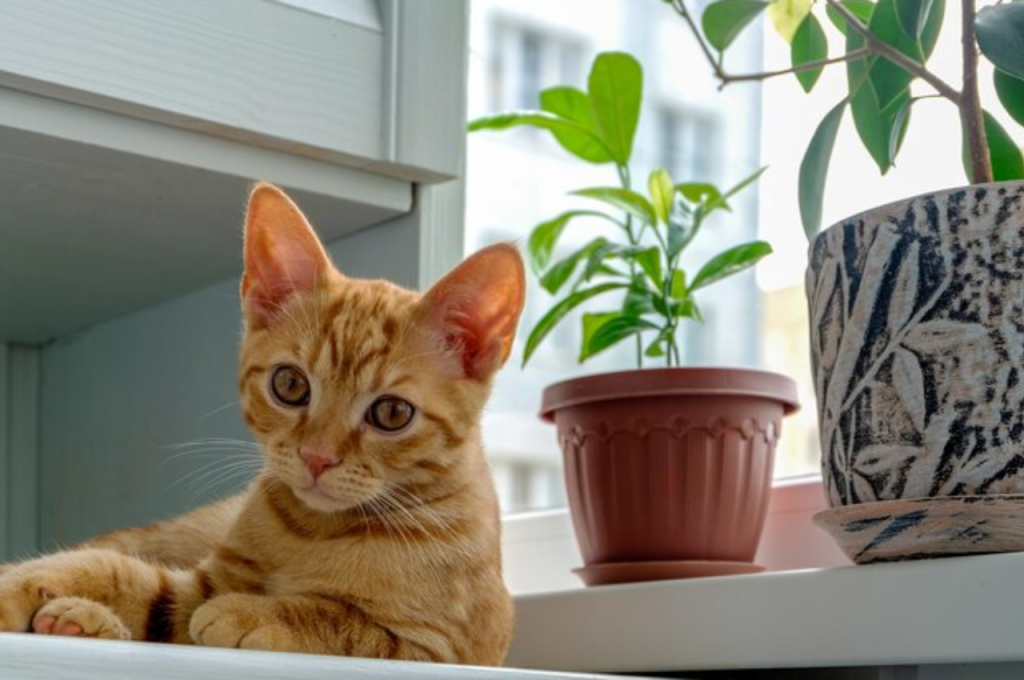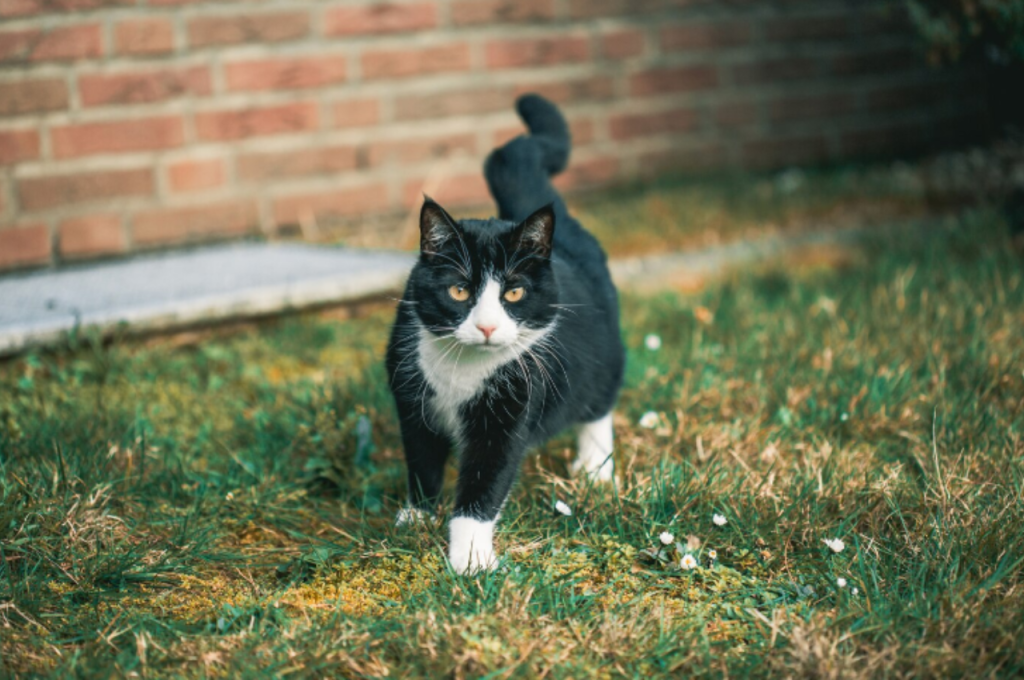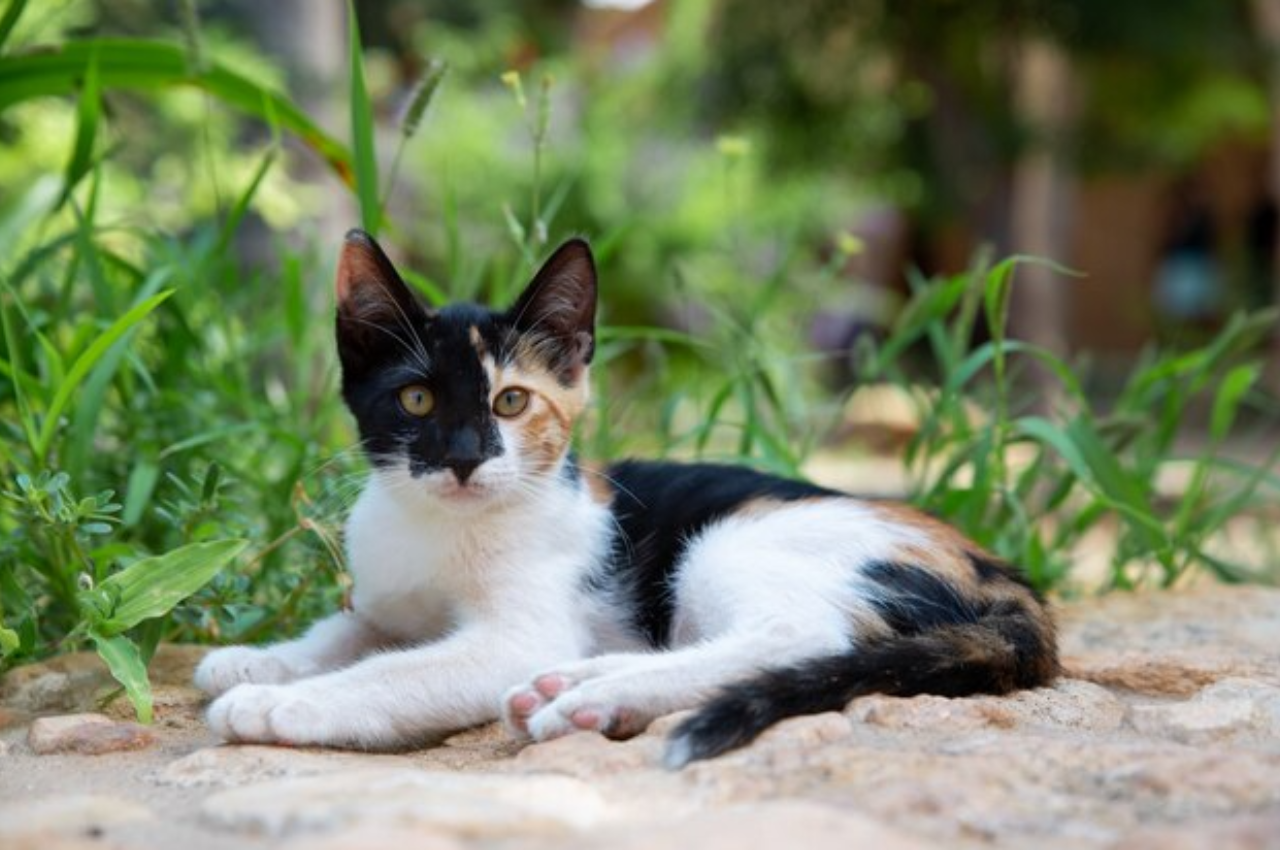To determine whether a cat is indoor or outdoor, observe its behavior and living conditions. Indoor cats typically have a calm and relaxed demeanor, enjoy being indoors, and may show little interest in venturing outside.
They may also have a healthier appearance, with well-groomed fur and trimmed nails. On the other hand, outdoor cats tend to be more active, curious, and independent. They may display hunting behaviors, have a rougher appearance with possible scratches or wounds, and may bring home prey. Additionally, outdoor cats may have a higher risk of exposure to parasites and diseases. By considering these factors, you can determine whether a cat prefers the indoors or the outdoors.
Introduction to Indoor vs Outdoor Cats
Indoor and outdoor cats have different needs and behaviors. Understanding whether a cat is indoors or outdoors is important for their care and well-being. Let’s explore the physical appearance clues and behavioral signs that can help you determine if a cat is indoor or outdoor.

Physical Appearance Clues
Physical features can provide hints about a cat’s living environment. Outdoor cats may have roughened pads on their paws due to walking on rough surfaces. Additionally, they may have ear notches from fights or injuries. In contrast, indoor cats are more likely to have softer pads and less visible signs of wear and tear.
Behavioral Signs
Observing a cat’s behavior can also reveal whether they are indoor or outdoor. Outdoor cats may exhibit behaviors such as hunting or territorial marking. They may also show a strong desire to go outside. On the other hand, indoor cats are more likely to engage in playful activities and seek interaction with humans rather than showing a strong urge to explore outdoors.
The Tale of Tails and Coats
To determine if a cat is primarily indoor or outdoor, observe its tail and coat condition. Indoor cats usually have clean, well-groomed coats with minimal dirt or debris. Their tails are often fuller and less prone to damage. In contrast, outdoor cats may have rougher, more weathered coats, possibly with dirt, twigs, or even small injuries. Their tails might show signs of wear, such as thinning fur or slight abrasions from navigating the outdoors. By examining these physical traits, you can gain insights into the cat’s lifestyle and environment.
Condition of The Coat
The condition of a cat’s coat can provide clues about whether it is an indoor or outdoor feline. Outdoor cats are more likely to have tangled and dirty coats, while indoor cats usually have clean and well-groomed fur.
Tail Tells a Story
A cat’s tail can also reveal whether it is an indoor or outdoor pet. Outdoor cats often have scuffed and weathered tails, whereas indoor cats typically have well-maintained and sleek tails.
Paws and Claws: Silent Indicators
When it comes to distinguishing between indoor and outdoor cats, the silent indicators lie right at their paws and claws. Observing the wear and tear on their paws and the length and sharpness of their claws can provide valuable insight into their lifestyle and habits.
Wear and Tear on Paws
Check for calluses or rough patches on the pads of the cat’s paws. These could indicate outdoor activity, as the rough surfaces of the outdoors can cause such wear. Additionally, inspect for foreign objects such as dirt, twigs, or small rocks that may be lodged in the paw pads, suggesting outdoor exploration.
Claw Length and Sharpness
Observe the length and sharpness of the cat’s claws. Outdoor cats often have longer, sharper claws, which they use for climbing, hunting, and self-defense. Indoor cats, on the other hand, may have shorter and less sharp claws due to reduced use.
Collars and Tags: Human Imprints
One way to tell if a cat is indoor or outdoor is by checking its collar and tags. Outdoor cats often wear collars with identification and contact details, while indoor cats may not wear any at all. This simple visual clue can help determine a cat’s living environment.
Types of Collars
There are several types of collars available in the market, each with its own unique features. Here are some of the most common ones:
- Breakaway Collars: These collars are designed to come apart if they get caught on something, preventing the cat from getting hurt.
- Elastic Collars: These collars stretch to allow the cat to escape if it gets stuck somewhere.
- Buckle Collars: These collars have a buckle that can be adjusted to fit the cat’s neck snugly.
Information on Tags
Tags are small metal or plastic pieces that attach to a collar and provide important information about a cat. Here’s what you can find on a typical tag:
| Information | Description |
| Name | The cat’s name, which can help identify it if it gets lost. |
| Address | The cat’s home address, which can help someone return it to its owner. |
| Phone Number | The cat owner’s phone number, which can be used to contact them if the cat is found. |
| Vaccination Information | Information about the cat’s vaccinations, which can help determine if it’s safe to handle. |
In conclusion, collars and tags are an easy way to determine whether a cat is indoor or outdoor. By checking for these accessories, you can get valuable information about a cat’s living situation and help ensure its safety.
Social Behavior: Feline Interactions
Determining whether a cat is indoor or outdoor can be observed through various cues such as the presence of a collar, cleanliness of the coat, and behavior towards strangers. Indoor cats may exhibit a more cautious and reserved demeanor, while outdoor cats tend to be more adventurous and social with unfamiliar individuals.

Approachability
Approachability can be a key indicator of whether a cat is an indoor or outdoor feline. Indoor cats tend to be more approachable and comfortable around people due to their regular interaction with humans. They may seek out attention, approach you readily, and display relaxed body language.
In contrast, outdoor cats might be more cautious or wary, especially if they are not used to human contact. They may keep their distance, exhibit more alert behavior, and be less likely to seek out interaction. Observing a cat’s approachability and behavior around people can help determine whether it’s an indoor or outdoor cat.
Reaction to Human Touch
A cat’s reaction to human touch can offer clues about whether it is an indoor or outdoor cat. Indoor cats are generally more accustomed to human interaction and may respond positively to touch, often purring or leaning into pets. In contrast, outdoor cats might be more cautious or skittish around humans, sometimes flinching or retreating when approached.
If a cat is consistently wary or defensive when touched, it might indicate that it spends more time outdoors or is not used to frequent human contact. However, individual personalities and past experiences also play significant roles in a cat’s reaction to touch, making it important to consider the broader context.
Health and Hygiene: Subtle Signals
Health and hygiene are important factors to consider when determining whether a cat is indoor or outdoor. While some cats may show obvious signs, others may require a closer look. Here are some subtle signals to look out for:
Fur Matting and Parasites
Outdoor cats are more likely to get fleas and ticks, which can cause fur matting, and can be a sign that a cat is spending more time outside. If a cat has fleas or ticks, it may scratch or groom excessively and have small bumps or scabs on its skin. It is important to regularly check your cat for fleas and ticks and seek treatment if necessary.
Overall Cleanliness
Indoor cats tend to be cleaner than outdoor cats, as they are not exposed to dirt, mud, and other outdoor elements. If a cat is indoor, it is likely to have a clean and well-groomed coat, with no signs of dirt or debris. Outdoor cats, on the other hand, may have a coat that is dirty, matted, or tangled, with a strong odor. They may also have dirty paws and claws, which can be a sign that they spend more time outside.
It is important to keep your cat’s health and hygiene in mind when determining whether they are indoor or outdoor. Regular grooming, flea and tick prevention, and monitoring overall cleanliness can help keep your cat healthy and happy, whether they prefer the great outdoors or the comfort of your home.
Feeding Patterns: The Hunger Games
Identifying whether a cat is indoor or outdoor can be determined by observing their feeding patterns. Indoor cats tend to have a consistent feeding schedule, while outdoor cats may display erratic eating habits. Additionally, indoor cats may have a more controlled diet, while outdoor cats may scavenge for food.
When it comes to determining whether a cat is an indoor or outdoor cat, their feeding patterns can provide some helpful clues. As natural hunters, cats have a strong instinct to hunt and scavenge for food. However, domestic cats are typically fed by their owners, which can affect their feeding patterns. Here are some key factors to consider when trying to determine if a cat is indoor or outdoor based on their feeding patterns:
Scavenging vs Scheduled Feeding
One way to determine if a cat is indoor or outdoor is to observe whether they are scavenging for food or being fed on a schedule. Indoor cats are often fed on a regular schedule, usually with measured portions of food. They may still exhibit some hunting behavior, such as stalking or pouncing on toys, but they are not as likely to scavenge for food. Outdoor cats, on the other hand, may have to hunt or scavenge for their food if their owner does not provide it for them. This can lead to irregular feeding patterns and a tendency to eat quickly when food is available.
Weight and Diet
Another factor to consider is a cat’s weight and diet. Indoor cats are generally more sedentary and may be prone to weight gain if they are overfed or not given enough opportunities to exercise. They may also be more likely to eat a diet that is tailored to their needs, such as a special formula for indoor cats.Outdoor cats, on the other hand, may have a more varied diet and may need to eat more to maintain their energy levels. They may also be more active, which can help them maintain a healthy weight.
In conclusion, by observing a cat’s feeding patterns, we can gain some insight into whether they are indoor or outdoor cats. Indoor cats tend to have a more scheduled feeding routine and may be more prone to weight gain, while outdoor cats may have more irregular feeding patterns and a more varied diet. However, it’s important to note that every cat is unique, and their feeding patterns may not always be a reliable indicator of their living situation.
Tracking The Tracker: Movement and Territory
Cats’ movement and territory can reveal whether they are indoor or outdoor pets. Understanding the range of movement and territorial markings can provide valuable insights.
Range of Movement
Cats have a smaller range of movement when they are primarily indoor pets. They tend to stay within the confines of their home and immediate surroundings.
Territorial Markings
Outdoor cats exhibit territorial markings by spraying or scratching objects around their territory. Indoor cats may display territorial behavior through rubbing against furniture or walls.
Microchips and Vet Visits: The Digital Clues
Microchips and vet visits are two of the best ways to determine if your cat is an indoor or outdoor cat. These digital clues can provide valuable information to help you keep your cat safe and healthy.
Microchip Registration
If your cat has a microchip, you can easily determine if it is an indoor or outdoor cat by checking the registration information. When you register your cat’s microchip, you will be asked to provide information about your cat, including whether it is an indoor or outdoor cat. This information can be accessed by animal shelters and veterinary clinics, which can help reunite lost cats with their owners.
Make sure to keep your cat’s microchip information up to date, including any changes to your cat’s living situation. If your cat was once an indoor cat but has started to spend time outdoors, it is important to update their registration information to reflect this change.
Health Records and Check-ups
Your cat’s health records can also provide clues as to whether it is an indoor or outdoor cat. Outdoor cats are at a higher risk for certain health issues, such as parasites and injuries from fights with other animals. If your cat has a history of these types of health issues, it may be an outdoor cat.
Regular vet check-ups can also provide information about your cat’s living situation. During these check-ups, your vet may ask about your cat’s living arrangements and any outdoor activities. They may also perform a physical exam to check for any signs of injuries or parasites. Overall, microchips and vet visits are two important tools to help determine if your cat is an indoor or outdoor cat. By keeping your cat’s information up to date and staying on top of their health care, you can help keep your furry friend safe and healthy.
Piecing Together The Puzzle
Determining if a cat is indoor or outdoor involves observing behavior, checking for a collar, and inspecting their paws for dirt or debris. Indoor cats may display more affectionate behavior, while outdoor cats tend to be more independent and territorial in nature.

Summary of Clues
- Outdoor cats may have dirt on their paws and fur, while indoor cats stay cleaner.
- Outdoor cats may have a leaner body shape due to increased activity levels.
- Outdoor cats may show signs of hunting behavior, like bringing in prey.
Responsible Pet Ownership
- Provide a safe environment for your cat based on their lifestyle.
- Regular veterinary check-ups are essential for indoor and outdoor cats.
- Spaying and neutering help control the cat population and prevent unwanted litters.
Conclusion
To determine if a cat is indoor or outdoor, there are several indicators to look out for. By observing their behavior, such as scratching on furniture or attempting to escape through open doors, you can gauge their preference. Additionally, examining their physical appearance, such as a well-groomed coat or signs of hunting, can provide further clues.
Understanding whether your cat is indoor or outdoor can help you provide the best care and environment for their well-being.
